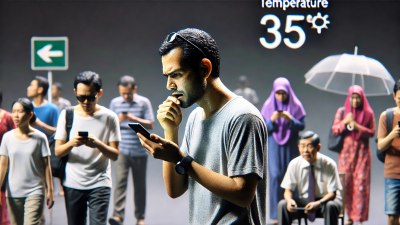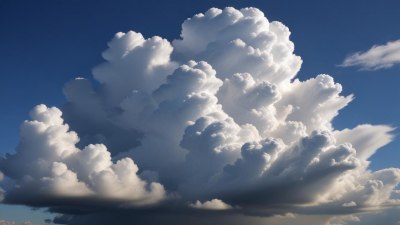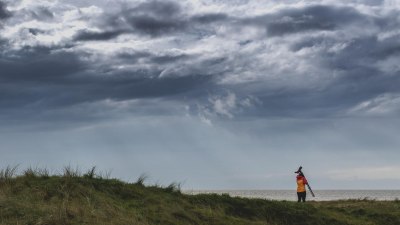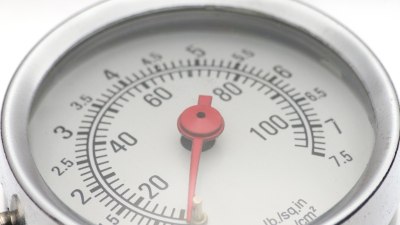Why Tornadoes Don't Happen Everywhere
Explore why tornadoes occur only in certain regions due to specific atmospheric and geographic conditions that are not universal.
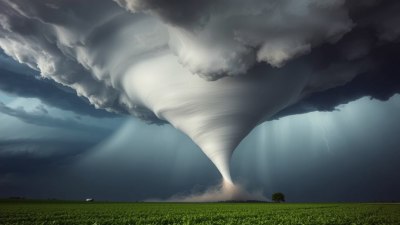
Image created with Flux Schnell
Tornadoes are among the most powerful and fascinating weather phenomena on Earth, often capturing public attention due to their destructive potential and dramatic appearance. However, despite their global presence, tornadoes do not occur everywhere. Understanding why tornadoes are concentrated in specific regions involves delving into atmospheric conditions, geographical factors, and seasonal patterns that together create the perfect environment for their formation.
What Exactly is a Tornado?
A tornado is a rapidly rotating column of air extending from a thunderstorm to the ground. They vary in size and intensity but are typically characterized by high wind speeds and the capacity to cause significant damage to everything in their path. Tornadoes usually form in association with severe thunderstorms, particularly supercells, which are complex storm systems featuring rotating updrafts called mesocyclones.
Key Ingredients for Tornado Formation
Tornado genesis depends on several critical ingredients within the atmosphere. The primary factors include the presence of warm, moist air near the surface, cooler dry air aloft, wind shear, and atmospheric instability. These conditions create a dynamic environment that fosters the development of powerful rotating updrafts necessary for tornado formation.
Warm, moist air is often supplied by large bodies of water like oceans or the Gulf of Mexico. This moist air rises and meets cooler, drier air descending from higher in the atmosphere. The interaction between these contrasting air masses creates strong storms. Wind shear, or the change in wind speed and direction with height, helps tilt and stretch these storms vertically. This tilt can organize storm rotation and sustain it long enough for a tornado to develop.
Geographical Factors Impacting Tornado Occurrence
The location of tornadoes is heavily influenced by geography. For instance, in the United States, the central region known as Tornado Alley experiences the most frequent tornadoes worldwide. This is primarily because the region acts as a natural meeting point for contrasting air masses: cold air from the Rocky Mountains and Canada, and warm moist air from the Gulf of Mexico.
The flat terrain of the Great Plains also plays a crucial role. It allows these air masses to collide unobstructed, promoting storm development. Mountainous or forested regions, which have more complex terrain features, tend to disrupt airflow patterns and can inhibit the consistent formation of tornadoes.
Global Distribution: Why Some Places Rarely Experience Tornadoes
While tornadoes occur on every continent except Antarctica, their frequency and intensity vary widely. Areas near warm ocean currents with moist air tend to see more tornado activity if combined with the right temperature contrasts and wind shear. Conversely, lands far from large water bodies often lack the warm, moist air necessary to fuel the storms that spawn tornadoes.
For example, Europe experiences fewer tornadoes compared to the United States because it generally has less extreme temperature contrasts and different airflow patterns. In tropical regions close to the equator, tornadoes are rare due to weaker wind shear and less atmospheric instability despite abundant moisture.
Seasonal Variations and Tornado Frequency
Tornado seasons vary regionally, driven by shifting weather patterns throughout the year. In the United States, spring and early summer provide the ideal conditions for tornado development as the jet stream, cold air masses, and warm moist air collide frequently. In other parts of the world, tornado seasons may align with monsoon or dry periods, depending on local climate dynamics.
Seasonality affects tornado activity because certain times of year promote the development of the strong storms needed to produce these vortices. When temperature gradients weaken during winter months or dry seasons, the likelihood of severe thunderstorms and tornado formation drops substantially.
Why Some Regions Are Tornado-Free Zones
Certain regions rarely or never see tornadoes because critical atmospheric or geographical factors are missing. Polar regions, for instance, lack the warm, moist air and significant temperature contrasts; similarly, desert areas usually have dry air and limited storm development. Also, extensive mountainous regions frequently prevent the formation of large, organized thunderstorms needed for tornado genesis.
Oceanic environments typically do not host tornadoes either. Although waterspouts—tornado-like vortices over water—do occur, they differ in their formation processes and usual intensity levels compared to terrestrial tornadoes.
Interactions Between Climate Change and Tornado Patterns
Climate change's impact on tornado frequency and distribution remains an area of active scientific research. Some studies suggest that warmer global temperatures might alter atmospheric conditions that favor severe storms, potentially shifting tornado corridors or intensities. For example, changes in jet stream patterns or moisture availability could influence where and when tornadoes form.
However, tornadoes are notoriously difficult to predict and study due to their localized and transient nature. Thus, understanding long-term trends requires extensive data and careful interpretation to distinguish natural variability from human-induced changes.
Urban Myths and Misunderstandings About Tornado Distribution
There are many misconceptions about where tornadoes can and cannot occur. Some believe that large cities or urban areas are immune to tornadoes, but this is not true. Tornadoes can and have struck metropolitan regions, sometimes causing significant urban damage.
Another common myth is that tornadoes avoid certain countries due to superstition or geography myths. In reality, physical conditions drive tornado formation rather than abstract cultural or arbitrary factors.
How Understanding Tornado Distribution Helps Preparedness
Knowing where and why tornadoes occur is vital for public safety and disaster preparedness. Regions prone to tornadoes develop specialized warning systems, building codes, and emergency response plans. These strategies significantly reduce casualties and damage when tornadoes strike.
In areas less familiar with tornadoes, education and awareness are equally important to minimize risks when rare tornado events happen. Meteorologists use the understanding of atmospheric and geographic factors to make forecasts and issue warnings well before tornadoes touch down.
Technological Advances in Tornado Research and Forecasting
Advances in technology have greatly enhanced our ability to study and predict tornadoes. Doppler radar is an essential tool that detects rotation within storms, helping to issue timely tornado warnings. Satellite imagery and atmospheric modeling enable researchers to analyze large-scale patterns that support tornado formation.
As computational power grows, meteorologists can simulate complex weather scenarios, improving understanding of the subtle atmospheric interactions that lead to tornado genesis. Such breakthroughs contribute both to more precise short-term forecasting and to identifying changing tornado risk patterns in a warming climate.
Tornadoes Are Products of Specific Conditions
Tornadoes form only under a unique combination of atmospheric ingredients, terrain, and seasonal timing. Warm, moist air meeting cooler dry air with sufficient wind shear and instability, along with geography that facilitates these interactions, produces the tornado-prone regions. Because such perfect conditions are not found everywhere, tornadoes remain rare or absent in many parts of the world.
Understanding these factors helps explain the global distribution of tornadoes and aids communities in preparing for potential tornado impacts. It also highlights the incredible complexity of Earth's weather systems and the delicate balance required for these awe-inspiring but dangerous storms to appear.
